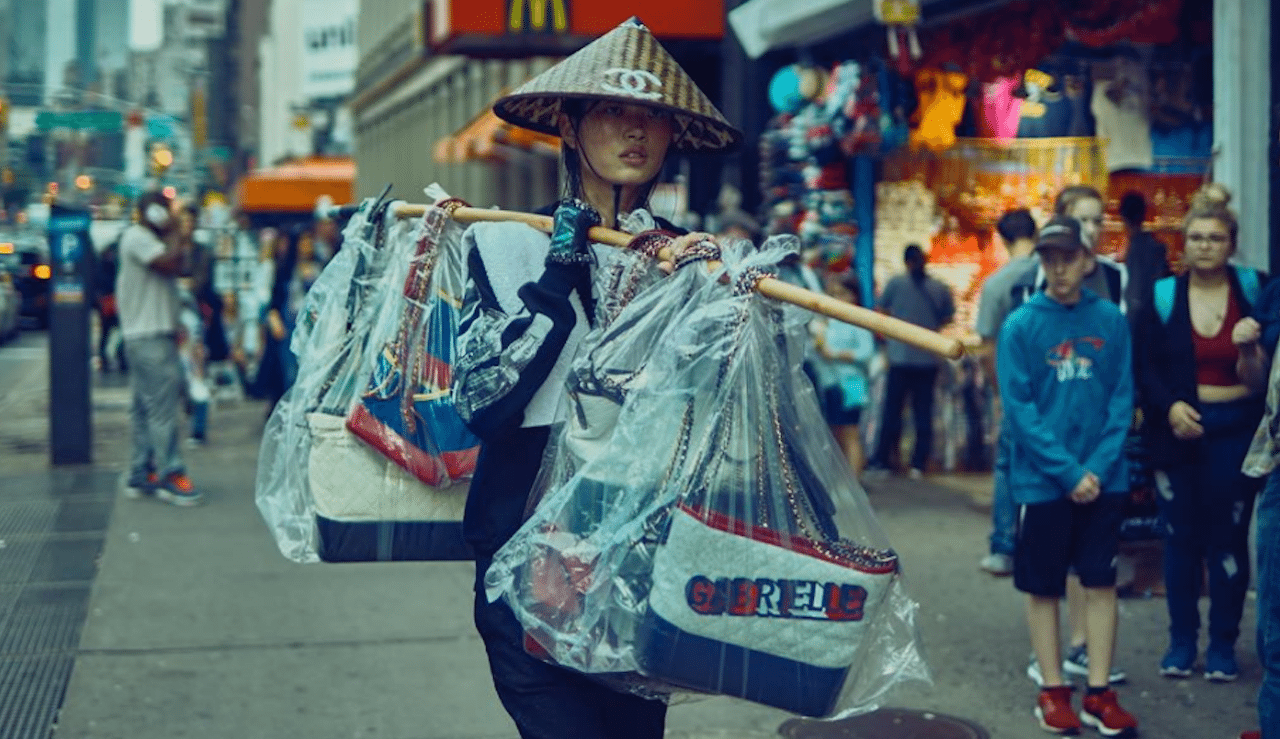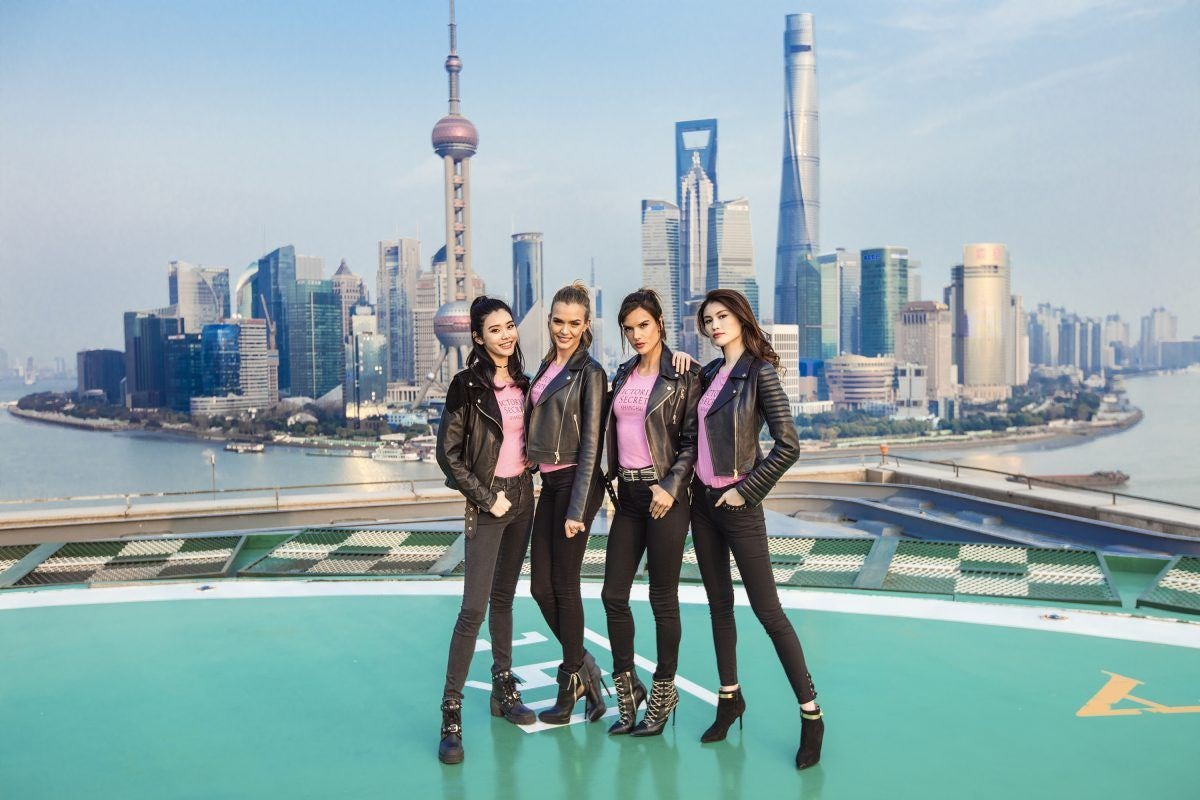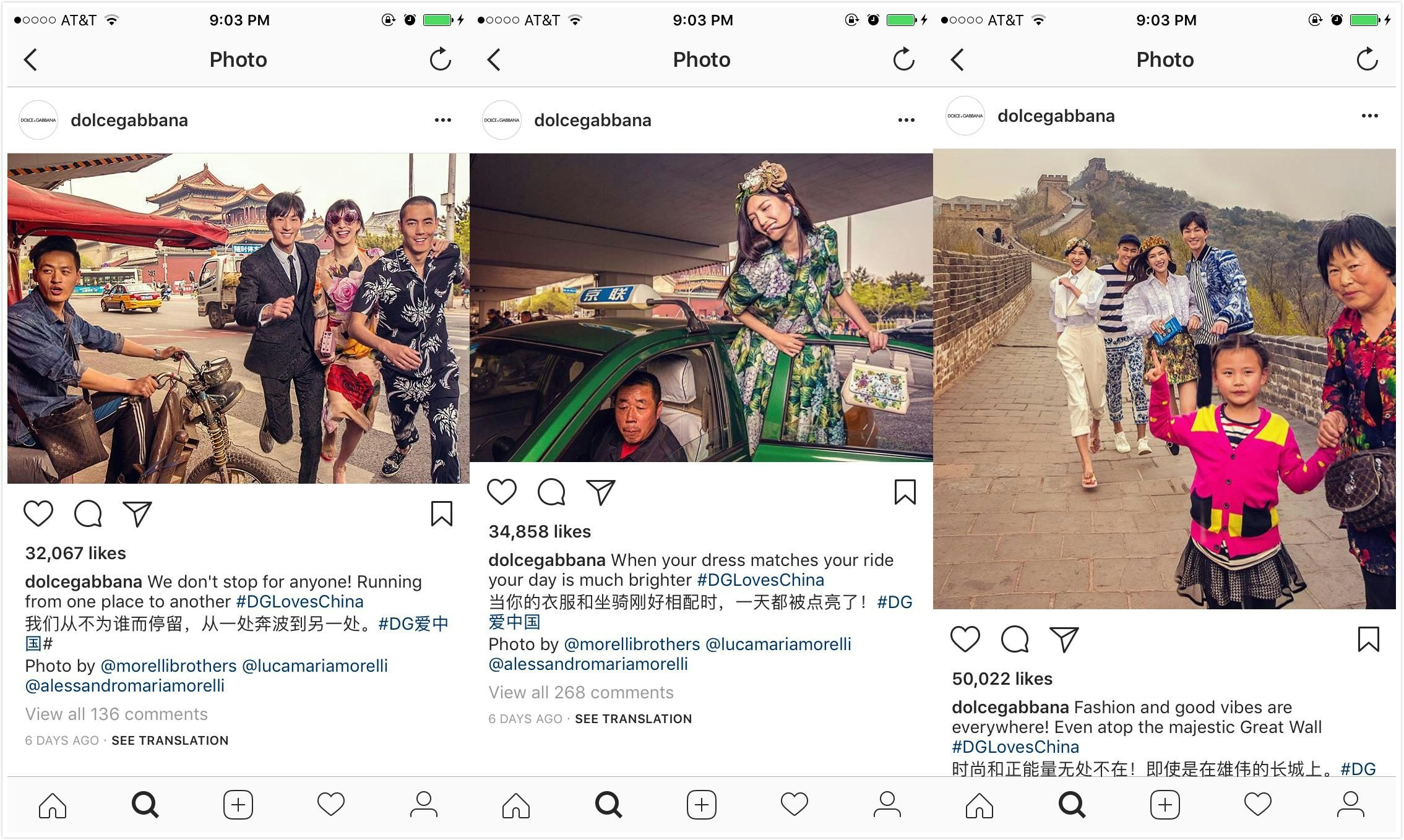Photographer Billy Kidd is being criticized for a photo shoot he did in the August issue of Interview Magazine that people say reinforces Asian racial stereotypes.
Entitled “Coco Served Hot," the images portrayed an Asian woman in a traditional Asian farmer's hat walking in New York's Chinatown lifting a bindle stick on which were hung bags that look like knock-off products. The woman is wearing head-to-to Chanel from her conical straw hat emblazoned with a Chanel logo to the Chanel Gabrielle handbags to her sandals. People were infuriated over the image because it seemed to associate the Chinatown worker with counterfeit luxury goods.
“Foreign brands should be more sensible with Chinese consumers because the market is very unique," Louis Houdart, founder of a branding agency Creative Capital China, told Jing Daily. "They should be careful about not hurting their feelings.” He observed that more foreign brands in the industry are now working with local agencies to avoid similar cultural pitfalls.
In his defense, the photographer said in a post on his Instagram feed that he was inspired by mainland Chinese workers, and that his intent was never to offend or tease but to uplift and honor what he finds beautiful. The photographer’s reaction ignited furious criticism from influencers in the fashion industry.
American designer Phillip Lim (who is of Cambodian descent) said in the picture’s comments section, "This is NOT OK!" and "This is offensive and culturally insensitive."
Because of the heavily branded shoot, Chanel was also pulled into the fray. "It's 2017, time to wake up and @chanelofficial—who I believe has such a huge business in Asia," Lim wrote, "perhaps should address this."
Many readers blamed Chanel, one user calling the picture "a celebration of the vast income disparity across cultures and countries, which is due to unfair trading agreements and possibly sweatshops." The reader then urged Chanel to "try to be more culturally sensitive."
This is not the first time Chanel has come under attack for espousing cultural stereotypes. A Chanel boomerang, which the company released in May, initiated a firestorm of criticism and was regarded as insensitive appropriation of indigenous Australian culture.
Many of the top luxury brands have been working diligently to make their brand image China-friendly, whether it’s Victoria's Secret which sent a model down the runway in a "dragon suit," or brands creating luxury items thematically designed to fit with Chinese holidays (such as zodiac-themed products for Chinese New Year). Despite these good intentions, the campaigns often fall flat creating a cliched portrayal of culture in China that the Chinese believe is far from their contemporary experience.
Houdart credits the brands' faux pas in these kinds of situations with the speed of communications in the digital era. The existence of social media, he says, has accelerated the negative impact of certain wrongdoings.
With companies increasingly looking to enter into, or expand their presence in, the China market, and to appeal to its digitally-savvy younger generations, it behooves them to pay heed to these kinds of situations and get with the speed of the digital age.


